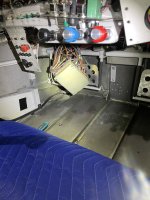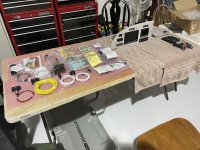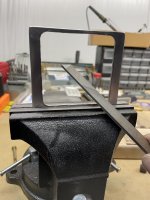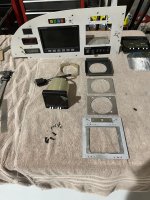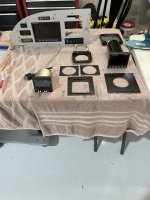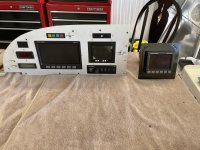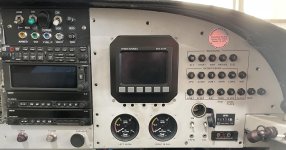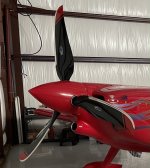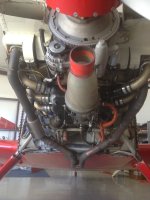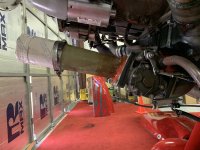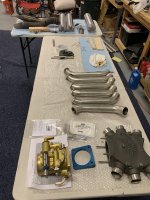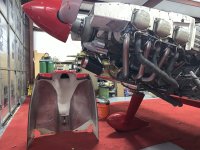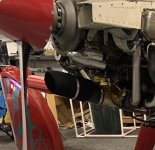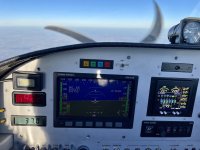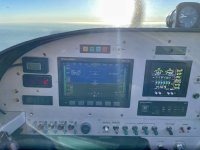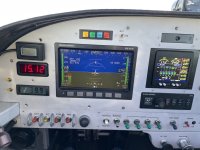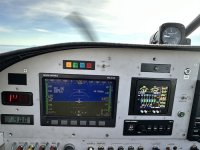Wow! What a great thread. After a 13 year hiatus from RV land, I find this. You're living the life of experimental aviation.
The RV-15 brought me back, but I still remember the wonderful RV-8, and this makes me want to build another and go racing!
It has been a while since you updated this thread, I assume you're busy flying and tweeking and having fun. A good showing at Reno!
Best wishes to you all, John
Hi John! So awesome to hear from you! You were the inspiration for many things we've done over the years, and I still remember ogling over your beautiful (and super-fast) 8. Hope to see you out there someday soon!
Thanks for the compliments...Steve did create a beautiful set of wings!
Here's a copy of the post I just made in response to a question about racing comparisons between new and old wings.
See you soon!
Cheers,
Bob
Scott (Freemasm) and the VAF Gang,
Coming up for air after getting back from Reno, then dashing off to a SWA bud's retirement, and doing a short work trip. Now reconfiguring Rocket Six back into the "normal RV grin" mode.

Rocket Six has raced in Reno 10 times since 2011. We missed 2016 with a cracked engine mount repair, 2020 due to COVID, and 2022 as the wings were in final install mode, and we didn't want to rush it.
The year to year comparison that Scott asked about is 2021 vs 2023. That is the last year with the Harmon Rocket style clipped metal wings, vs the first year with the new Smith Aero Carbon Fiber Tapered wings. Here is a numbers comparison. Keep in mind that year-to-year, even day-to-day comparisons, are somewhat impacted by the temperature, winds, turbulence, and "meat-servo" performance. All speeds are MPH.
2021
Qualified 16th in Sport @ 262.354 (Started 8th in Sport Silver)
Heat 1B (6th Silver): 252.504 (this speed bumped me down to Bronze)
Heat 2C (1st Bronze): 262.223 (this speed bumped me back up to Silver)
Heat 3B (7th Silver): 263.838
Silver Final: Scratch due to FP transducer failure during taxi out
2023
Qualified 23rd in Sport @ 268.460 (Started 7th in Bronze)
Heat 1C (5th Bronze): 257.991 (this speed bumped me down to Medallion)
Heat 2D (1st Medallion): 267.323 (this speeds bumped me back up to Bronze)
Heat 3C (3rd Bronze): 269.662
Bronze Final (5th Bronze): 268.964
General Analysis: At initial glance, one might postulate that the wings increased the max qual and race speeds by about 6 mph. I'm not sure that would be a fully-accurate conclusion though, as there were many variables in play. It would be nice to have more years of flying the same course in Reno, to continue to refine the line and the technique with the new wings...I honestly think we could be faster...as I learned much during the week, and have replayed the races many times, and have strategy I would like to try. Unfortunately, that won't be the case, as this was the final year for the races in Reno.
In both 21 and 23, the N2O system and water spray cooling required a lot of tweaking to dial in. To be honest, I don't think it was ever at 100%...we were chasing cooling issues both years. In 21 we worked a lot on the water spray nozzles to get CHTs in line. In 23, we had N2O system issues (clogged jets and other small malfunctions), and we experimented more with water spray nozzles, and a new-for-'23 ADI system (water-methanol Anti Detonation Injection). We got close, but I was still richening the mixture a bit more than I had hoped during the races, to keep #5 and/or #6 CHTs from running away.
In both 21 and 23, after a good qualifying period, we had issues that slowed us down in Heat 1. As we dialed it in, we got back up to the speeds we qualified at, and then went faster in later heats.
While that 268.460 qual this year was the 5th fastest of all time for Rockets or RVs, it fell short of the 276.899 posted by Todd Rudberg (RV-8 with N2O), which is the fastest Metal Mafia speed ever at Reno. Bill Beaton (HR-II with SC) is right behind at 276.132, with Neil Wischer (RV-8 with N2O...271.954) and Chris McMillian (F1 Rocket with N2O...270.260) the only other Metal Mafia pilots to qualify over 270.
However, we were very happy with that 269.662 mph average speed for Heat 3C, as that was the second fastest RV or Rocket full-race average speed ever. Bill Beaton holds that high mark, at 272.940. During that race, we passed a Lancair Legacy on the start, and gave chase to a Glasair III the entire race...all while hauling around our fixed gear. Perhaps the most fun race in my Reno career, and I think the strongest testament to the performance increase provided by Steve Smith's awesome wings!
One of the most exciting things to have seen during the 2011-2023 period, is how fast Sport Class Air Racing has become. Jeff Lavelle set a new record of 410.635 mph this year, with Andy Findlay right behind at 406.107. Those two, and Jon Sharp, are the elite Sport Class 400 club...WOW!
In that same period, we added 30 mph to our Rocket Six qualifying speed, and 29 mph to our average race speed...while dropping from Second in Bronze in '11 to 5th in Bronze in '23. Just a testament to the popularity, innovation, and experimentation within out Race Class...the class for Experimental Aircraft! We did move from hunting HR-IIs in the early days, to hunting F1 Rockets, Legacies, and Glasairs these days. I want to give a shout out to my two amigos that also flew Sport 49, while I was playing with a Thunder Mustang, a Glasair III, a Legacy and an L-39. Shane Margraves and James Stringer did a phenomenal job flying and racing, and will always be a part of the plane's legacy! Another big shout out to Crew Chief and Airshow Wingman extraordinare, Sean "Goose" Farrell. Best of the best!!
Thanks to the many VAF friends and family that stopped by the pits this, and every, year! It has always been great to share the fun of racing with everyone, and I know Steve really enjoyed talking with the many folks that stopped by to ask questions about the wings.
This year Sport Class Air Racing and it's new subsidiary, Sport Air Racing Council, earned FAA accreditation to conduct single-class Sport Class Air Racing. Our first event is October 21, 2023 at the Las Cruces, NM Air and Space Expo. We sure hope to see many of you out there, and we'll post future events as we build them!
Here's some photos from Reno '23:
James, Sean and Steve out in the staging area:
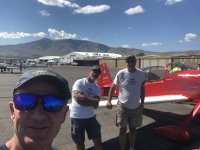
Taxi out:
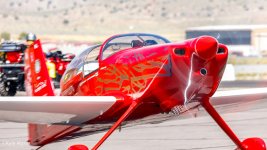
Rounding a pylon:
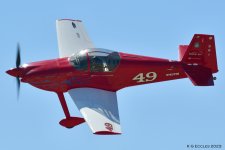
That's a turbocharged Legacy trying to get by (he did):
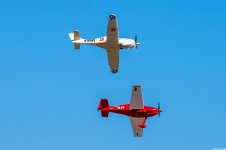
Fun race in Heat 3C:
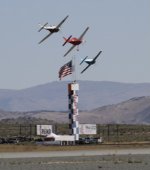
Chris in 96 giving chase in the Bronze final:
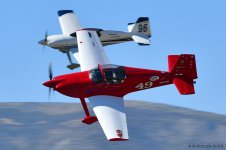
Just before Home at the finish of the Bronze Final:
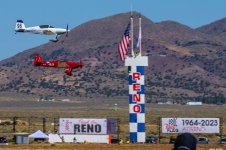
Just after Home at the finish of the Bronze Final:
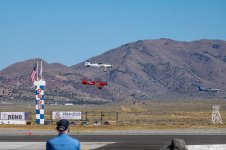
I reckon the sign says it all!
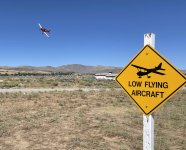
Cheers,
Bob
